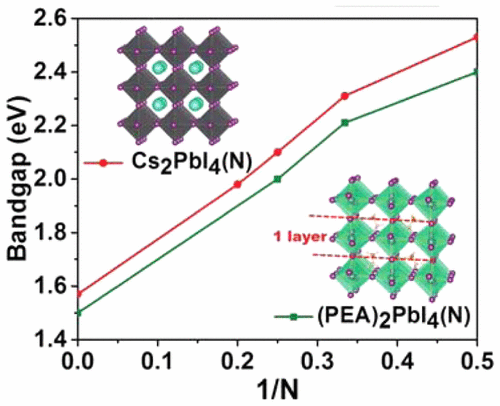我室梁万珍教授在 J. Phys. Chem. Lett. 上发表题为“How the Structures and Properties of Two-Dimensional Layered Perovskites MAPbI3 and CsPbI3 Vary with the Number of Layers”的研究论文。
文章链接:http://pubs.acs.org/doi/abs/10.1021/acs.jpclett.6b03005
摘要:
This work aims to explore the intrinsic properties of two-dimensional (2D)-layered perovskites, (PEA)2PbI4(N) and Cs2PbI4(N), and demonstrating how their structures and properties vary with N. The results reveal that both (PEA)2PbI4(N) and Cs2PbI4(N) are direct bandgap semiconductors, their band/optical gaps and exciton-binding energies vary linearly with 1/N at N ≥ 3, and the effective masses slowly vary with N. Compared to the bulk phases, the structures of ultrathin (PEA)2PbI4(N) are more flexible and deformable than Cs2PbI4(N). The giant spin-coupling effect greatly decreases the band gaps of both 2D materials; however, it only induces the spin splitting in the bands of (PEA)2PbI4(N). This work suggests that the ultrathin 2D materials can be a potential candidate for nano-optoelectronic devices, and that the nanoplates with N ≥ 3 could have similar performances with bulk materials in the carrier migration and exciton separation so that they can be effectively applied in photovoltaic cells.
